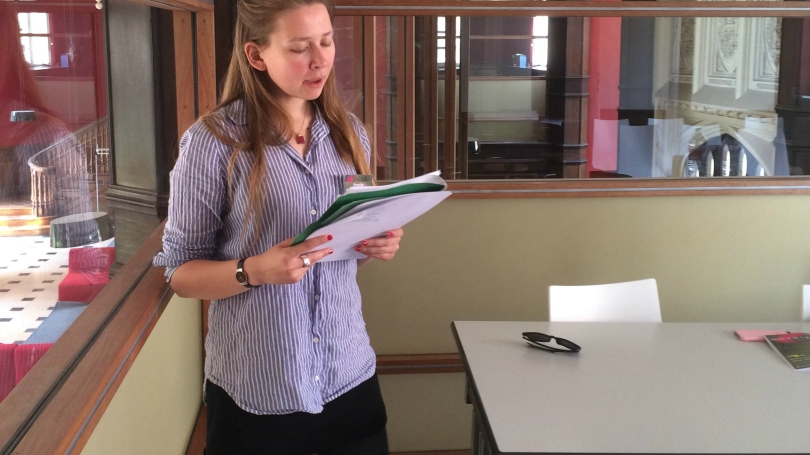
- Public Policy
- Leadership
- Funding
- News & Events
- About the Center
Back to Top Nav
Back to Top Nav
Back to Top Nav
Back to Top Nav
While attending the International Emily Dickinson Society Conference in Paris, I learned many things. I presented a paper on “Queer Time in Dickinson’s Poetry,” and it turned out that the panel I was on—“Intimations of Time”—was chaired by Martha Nell Smith, a scholar whose work on Dickinson’s Queer Erotics was the foundation for my own take on Dickinson’s poetry. Though this was incredibly daunting, it was also the best possible place for me to present my ideas, and having Professor Smith chairing the question and answer session after our panel made it that much more interesting. Though standing up and presenting a paper in front of scholars who had studied Dickinson for longer than I had been alive was scary, it was nothing compared to the question and answer session. While I had been working on my paper for months, and knew every single word by heart, there was no way to prepare for the questions that would be posed.
Surprisingly enough, the question and answer session was more invigorating than terrifying, with a robust discussion of what “queer time” was, and whether a focus on time detracted from questions relating to Dickinson’s sexuality (I argued passionately that it did not). Time was a concept that came up repeatedly during the conference, with papers given on “Dickinson’s Clocked Poetics”, “Planetary Time” in Dickinson’s poetry, and the role of the archive in preserving/altering perceptions of Dickinson’s Poetry. Hand in hand with questions of time came questions of politics. Should we consider Dickinson and her poems in the context of the time they were written? How should we grapple with questions of race, sexuality, and accessibility, given that all categories have changed immensely since Dickinson first began writing? Was Emily Dickinson Racist? Was she influenced by African American culture? If she was racist, can she be reclaimed? Questions of time and social justice are ones that I find immensely exciting, and so listening to these papers and engaging in conversation was incredibly intellectually stimulating, but perhaps even more interesting was seeing the completely different ways that conference participants responded to Dickinson’s poetry.
In addition to the panels and discussion periods, there were several art installations, and performance pieces responding to Dickinson’s poetry. These included installations of Dickinson’s poems on large floating blocks in a nearby pond, an exhibition of 21 separate gouache paintings, each accompanying a Dickinson poem, and a rendition of a few of Dickinson’s songs that had been set to music. The last one in particular was incredibly interesting—hearing the way different artists had interpreted the same words and placed them in conjunction with melody highlighted the multifaceted nature of many Dickinson’s poems, and how one poem can be playful, dramatic, or sad depending on the interpretation. The main thing I took away from the conference is that you can spend decades studying something and still find exciting ways to look at it with fresh eyes. The phrase I heard most commonly was “I’d never thought of that before!” Doubtless the goal of such a conference should be to bring together experts and lovers of Emily Dickinson, and ensure that every person left with new ideas and fresh energy to pursue them—in this respect the conference was undoubtedly a success.
Annelise Brinck-Johnsen '17, Rockefeller Mini-Grant Recipient
The Rockefeller Center's Mini-Grants program funds registration fees for students attending conferences, as well as the costs of bringing guest speakers to Dartmouth. The views and opinions expressed here are the author’s own and do not necessarily represent the views and opinions of the Rockefeller Center or constitute an endorsement by the Center.